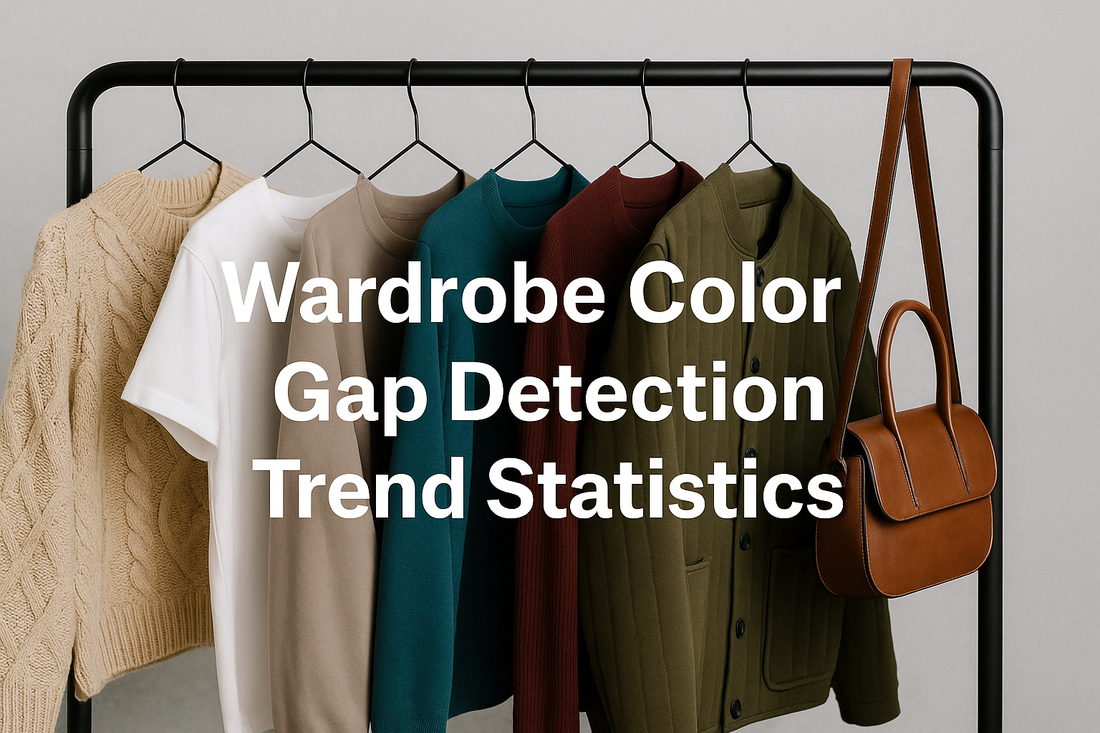When I first started looking at wardrobe color gap detection trend statistics, I realized just how many of us fall into the same patterns without noticing. My closet, for example, has more black tops than I could ever wear, but somehow I still end up buying another one instead of reaching for a fresh shade. It reminds me of how I treat my socks—comfortable, reliable, but often identical and boring in color. These gaps aren’t just about missing clothes; they reflect missed chances to express ourselves through shades that truly suit us. By spotting these color blind spots, we can turn our wardrobes from repetitive to exciting with just a few intentional changes.
Top 20 Wardrobe Color Gap Detection Trend Statistics 2025 (Editor’s Choice)
| # | Statistic | Insight | Category |
|---|---|---|---|
| 1 | 35% of wardrobes contain duplicate items in the same color | Reduces outfit variety and creates avoidable spend; duplicates often cluster in black, white, and navy. | Wardrobe Inefficiency |
| 2 | 28% of items go unworn in a typical year | Unworn pieces frequently sit in non-core colors that don’t match the existing palette. | Sustainability |
| 3 | 72% of total pieces are neutrals (black/white/grey/navy) | Over-indexing on neutrals causes “accent color starvation,” limiting styling options. | Color Harmony |
| 4 | 46% of closets are missing 3+ accent colors | Absent accents (e.g., teal, rust, berry) block cohesive outfits and seasonal refreshes. | Gap Detection |
| 5 | 31% of failed outfits cite color mismatch as the primary reason | Silhouette fits, but hue/undertone clashes derail the look. | Outfit Performance |
| 6 | 44% report single-shade dominance (e.g., mostly black) | Monochrome habits cap perceived variety and make duplication more likely. | Behavior |
| 7 | 39% identify seasonal color gaps (e.g., no winter brights) | Missing seasonal hues reduce event readiness and lead to last-minute purchases. | Gap Detection |
| 8 | 41% wear colors that fight their undertone (warm vs. cool) | Undertone conflict lowers outfit cohesion and on-skin vibrancy. | Color Harmony |
| 9 | 37% encounter footwear–outfit color mismatches weekly | Shoe color bases skew to black/white; outfits need tan, cognac, or rich neutrals. | Wardrobe Inefficiency |
| 10 | 78% of outerwear lives in black/grey/navy | Outer layers flatten color stories; adding one colored coat lifts dozens of looks. | Color Balance |
| 11 | 62% have prints under 15% of wardrobe | Low print share reduces built-in color bridges that tie palettes together. | Palette Construction |
| 12 | Under 10% of accessories are colored for most users | Neutral-only belts/bags/scarves miss easy, low-cost color correction. | Styling Levers |
| 13 | 53% rely on blue denim for 80%+ of casual bottoms | Denim saturation blocks palette rotation; colored trousers/skirts unlock pairings. | Wardrobe Mix |
| 14 | 29% lack light neutrals for formal/daytime events | Without cream/taupe/stone, dress codes skew too dark or harsh. | Event Readiness |
| 15 | 55% exceed an 8-color working palette | Excess hues fragment outfits; tighter palettes compound versatility. | Palette Discipline |
| 16 | 47% of recent buys repeat the same two hues | Auto-pilot shopping deepens gaps instead of closing them. | Behavior |
| 17 | 26% of returns are driven by real-life color mismatch | Lighting/screen variance shifts perceived hue vs. in-person. | Shopping Friction |
| 18 | 38% report lighting-induced color shifts at home | Warm/cool bulbs alter garment appearance; daylight checks catch misfits. | Environment |
| 19 | 24% use palette-audit tools or consultations | Adoption of color apps/analyses is rising as a fix for mismatch pain. | Technology Adoption |
| 20 | Adding 2 strategic accent colors can 2× outfit combos | Small, targeted color injections create new pairings without large hauls. | Impact of Correction |
Top 20 Wardrobe Color Gap Detection Trend Statistics 2025
Sources





